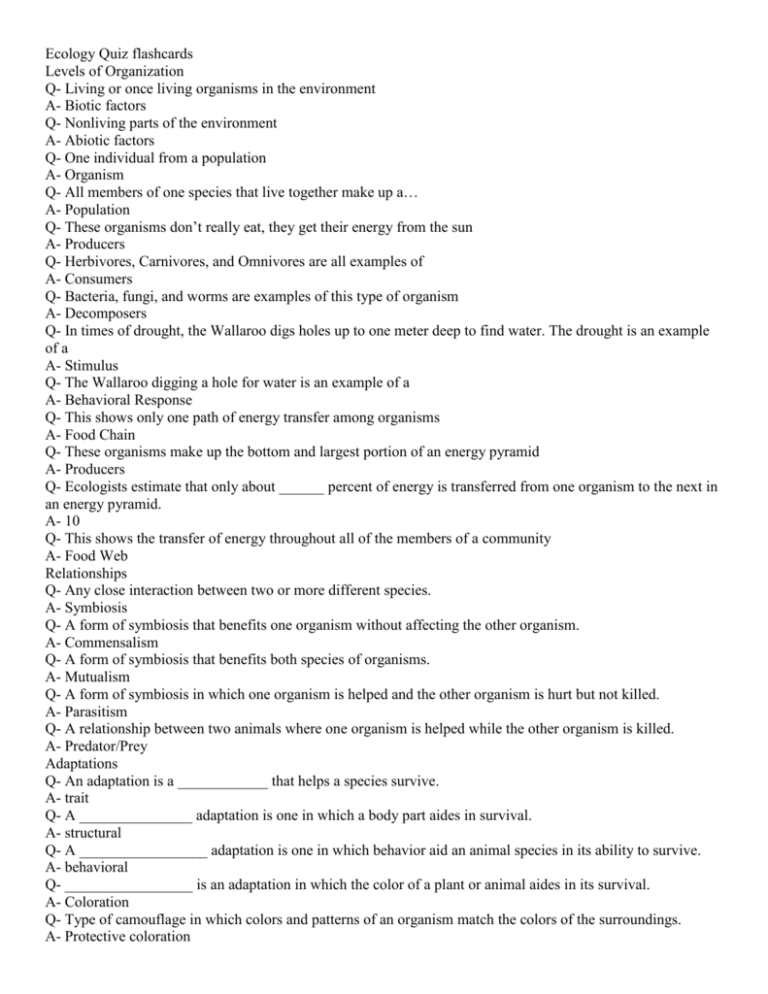Ecology Quiz flashcards
advertisement

Ecology Quiz flashcards Levels of Organization Q- Living or once living organisms in the environment A- Biotic factors Q- Nonliving parts of the environment A- Abiotic factors Q- One individual from a population A- Organism Q- All members of one species that live together make up a… A- Population Q- These organisms don’t really eat, they get their energy from the sun A- Producers Q- Herbivores, Carnivores, and Omnivores are all examples of A- Consumers Q- Bacteria, fungi, and worms are examples of this type of organism A- Decomposers Q- In times of drought, the Wallaroo digs holes up to one meter deep to find water. The drought is an example of a A- Stimulus Q- The Wallaroo digging a hole for water is an example of a A- Behavioral Response Q- This shows only one path of energy transfer among organisms A- Food Chain Q- These organisms make up the bottom and largest portion of an energy pyramid A- Producers Q- Ecologists estimate that only about ______ percent of energy is transferred from one organism to the next in an energy pyramid. A- 10 Q- This shows the transfer of energy throughout all of the members of a community A- Food Web Relationships Q- Any close interaction between two or more different species. A- Symbiosis Q- A form of symbiosis that benefits one organism without affecting the other organism. A- Commensalism Q- A form of symbiosis that benefits both species of organisms. A- Mutualism Q- A form of symbiosis in which one organism is helped and the other organism is hurt but not killed. A- Parasitism Q- A relationship between two animals where one organism is helped while the other organism is killed. A- Predator/Prey Adaptations Q- An adaptation is a ____________ that helps a species survive. A- trait Q- A _______________ adaptation is one in which a body part aides in survival. A- structural Q- A _________________ adaptation is one in which behavior aid an animal species in its ability to survive. A- behavioral Q- _________________ is an adaptation in which the color of a plant or animal aides in its survival. A- Coloration Q- Type of camouflage in which colors and patterns of an organism match the colors of the surroundings. A- Protective coloration Q- Type of camouflage in which the shape and color of an organism match objects of the surroundings. A- Protective resemblance Q- Type of camouflage in which a species resemble another species of the same habitat. A- Mimicry Q- Type of camouflage in which an animal has a spot that resembles an eye in order to fool predators. A- Eye Spots Q- Bold patterns and markings that serve as a warning to predators. A- Warning coloration









